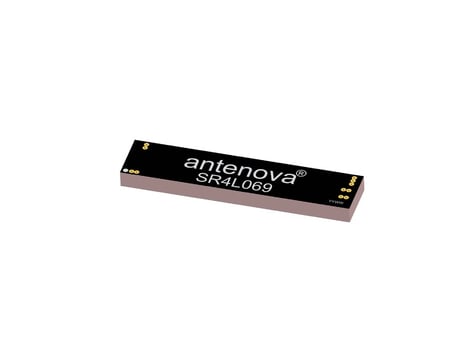A staggering 80% of new LTE devices fail network approval or associated certifications on their first try.
That's an extortionate volume of new device designs that fail. But is this a product of engineer naivety or down to the scale of the challenge? We'd say it's more likely the latter.
Despite these extraordinary failure rates, it's not impossible to achieve network approval. All it takes is a meticulous, holistic view of antenna and device, but that sounds much more simple than it really is.
The LTE Development Cycle
RF engineers will always recommend taking a holistic view of antenna and device. But, in LTE applications a holistic, planned approach is essential to performance.
MIMO antenna are challenging to integrate. Varieties of issues can surface throughout integration, and this is inevitable. It's vital, however, that you spot and fix these issues as they arise. Otherwise, you'll be in for a rough ride when AT&T pit your device against the 500-page long specification list.
It's important to review every design decision with regards to network approval. This begins right at the beginning, at the planning and definition stage:
Planning and definition
Early planning stages are essential to setting the agenda for the development cycle. Adopting a holistic tact is necessary to get a device through network approval. Your entire team needs to be aware of this and the managers who approve final designs.
As the casing is the visible aspect of the product, managers often have their heart set on this. Attempting to design a device backwards can work, but rarely in LTE applications. Marketing needs to be aware of this.
Development and testing
We're heavy proponents of the test-reconfigure-test framework for antenna design. In challenging applications, following best practice for antenna implementation is not always possible.
Design compromises will be necessary. It's important you take time to review these decisions and their impact. It is vital you do not fall below performance thresholds for certification.
Utilise testing equipment where you can to check you're on the right track. Any large organisation with a laboratory will be able to assist in some capacity. You'll need to review the following performance parameters on a regular basis:
- RSE - Radiated Spurious Emissions
- TRP - Total Radiated Power
- TIS - Total Isotropic Sensitivity
- SAR - Specific Absorption Rate
- Idle Mode Emissions
- SIM Testing
Testing across these parameters is essential. Overlooking these parameters is like forgetting to study for an exam—it won't bode well!
Certification
Achieving network approval for a device is very rarely a one-step process. Some carriers only approve devices that have been PTCRB certified. PTCRB certification can add costs to an already expensive process.
In North America, the certification process can occur in up to 5 distinctive stages:
- Pre-Testing and Preparation
- Certification - PTCRB (if applicable)
- Network/Carrier Testing
- Type Approval (FCC, etc.)
- Conformance Testing
These tests are stringent. It's imperative that your own tests show you surpass the passing requirements. If you are, in any way, unsure of your antenna performance, then beginning the certification process will only create more delays and expense.
Conclusion
It's easy to become overwhelmed by the intricacies of LTE antenna development. Even if you have developed an LTE device before, it can be off-putting.
Taking a holistic approach will serve you well in retaining important performance parameters. However, you can take extra steps to ensure that deadlines aren't missed and you pass the dreaded approval process.
Antenova provide comprehensive testing facilities, including Anechoic Chambers, and support. This support includes architecture reviews and pre-compliance testing. This type of support could be the difference between approval and rejection.




